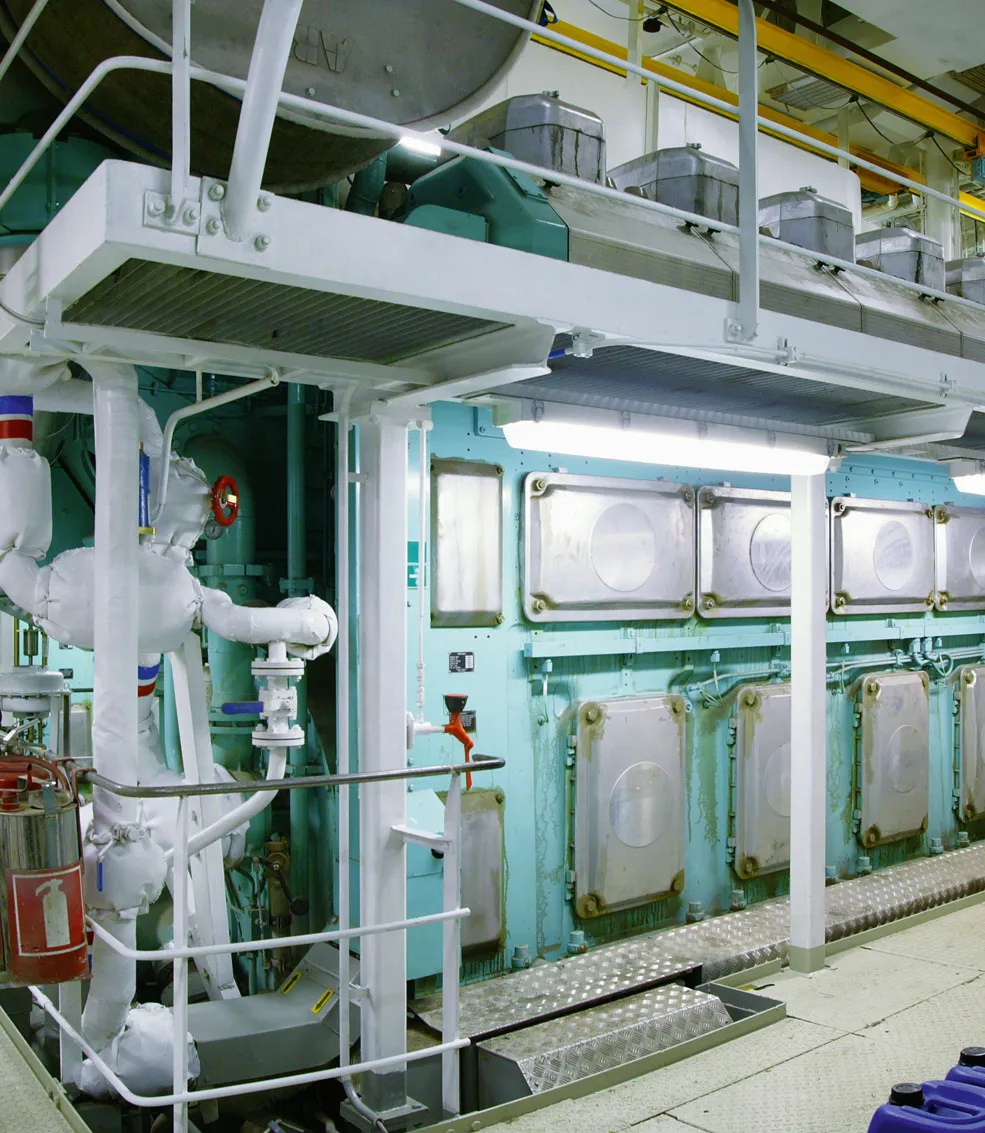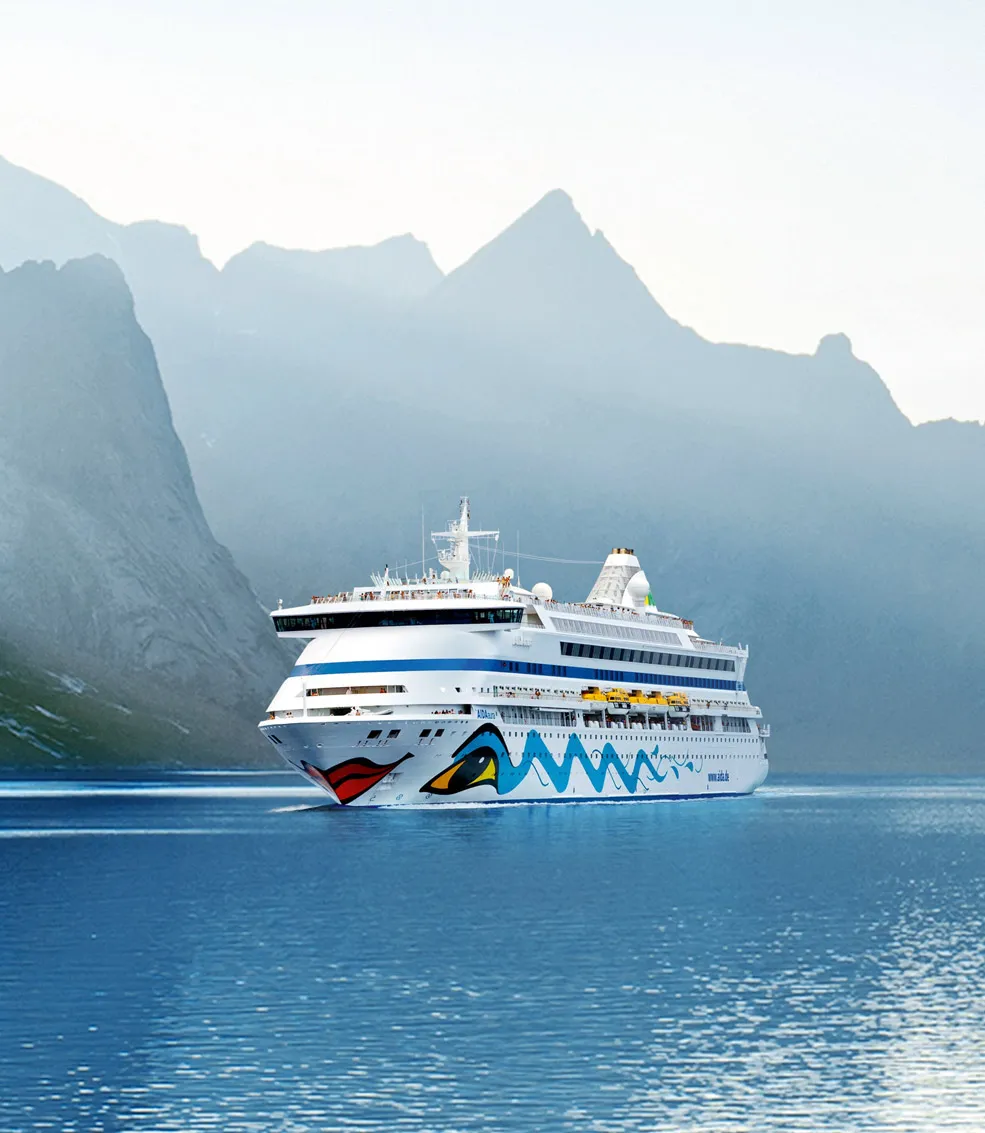Common ground
In a unique strategic partnership, Carnival Corporation, the world’s largest cruise operator, has teamed up with the world’s largest cruise ship lifecycle solution and equipment provider, Wärtsilä, to enhance engine reliability and efficiency as well as cut maintenance costs.
They came from opposite ends: retired Vice Admiral Bill Burke, now Chief Maritime Officer (CMO) for Carnival Corporation, spent most of his life in the U.S. Navy in charge of submarines; and Scotsman Fraser Scott, Head of 4 Stroke Sales AMER at Wärtsilä, was an aviation engineer for many years. They literally met in the middle – in surface shipping. Their respective employers, Carnival Corporation and ship lifecycle solution and equipment provider Wärtsilä, were locked in legal litigation because of maintenance matters. When Burke, and Scott first met a few years ago to help find a way out of their companies’ disagreements, they quickly discovered there was more common ground than anyone had anticipated. “Both sides were motivated to change their behaviour,” says Burke, who brought up performance-based logistics (PBL) as a basis for a new approach. When Fraser contributed several concepts from aviation, both parties began to think of the situation as a mutually beneficial strategic opportunity.
Today, after 20 months of negotiations, Burke and Scott have become a strong team. Their innovative 12-year strategic agreement for performance-based engine maintenance will take effect on 1 April 2017. “I am so emotionally invested in this deal with Carnival,” says Scott. The complex agreement, comprising 100 pages plus several hundred more of schedules and attachments, breaks new ground in the shipping industry, establishing an innovative form of collaboration between ship operators and equipment manufacturers that may eventually revolutionize the maritime sector as a whole.

A fresh approach
“Carnival used to have a transaction-based relationship with Wärtsilä,” explains CMO Burke. When an engine or component failed, Wärtsilä sold them the parts and services required for repairing the damage. “In a sense this arrangement worked in favour of the engine supplier: every time there was an engine problem the OEM was able to make another sale. This was the wrong kind of incentive, and it was not in Carnival’s best interest.” Burke had become acquainted with the PBL maintenance delivery model during his time in the U.S. Navy. Scott, on the other hand, was familiar with similar arrangements in the aviation industry. The gist of the new cooperation between the parties is the concept of sharing both the burden and the benefits of keeping ship machinery operational through condition monitoring and dynamic, proactive maintenance.
The agreement lowers the long-term maintenance costs for Carnival, while incentivizing Wärtsilä to address potential technical issues proactively by making appropriate changes to its engineering, manufacturing or stock-keeping practices. Wärtsilä’s investment costs are offset by Carnival sharing the fuel cost savings with the engine manufacturer. “Our arrangement essentially aligns both parties’ capital expenditures,” says Scott, “and both sides will be more satisfied with the outcome.”

Big data reveals optimization potential
All engine maintenance and monitoring work for roughly 400 engines on board 79 of Carnival’s vessels will be handled by Wärtsilä. The company will provide its dynamic maintenance planning (DMP) and condition-based maintenance (CBM) services to Carnival’s ships. The key element enabling performance-based logistics is Wärtsilä’s advanced data collection and processing capability, which was further enhanced recently by the acquisition of Eniram, a provider of energy management, analytics and performance optimization solutions. Wärtsilä remotely collects and analyses engine performance data, which is picked up by on-board sensors and transmitted via satellite. “We already have thousands of vessels connected to our system and are collecting large amounts of data,” Scott explains. “We are able to focus specifically on the Carnival engines to see how they are operating and how the crews are using them. This feedback loop allows us to discover additional potential for efficiency enhancements. We can see trends, follow degradation and predict points of failure so we can take proactive steps before failure occurs. We also receive data on operational procedures so we can tell the crews what they can do to improve performance and fuel efficiency.”

Maintaining and upgrading hardware
On-board maintenance is typically carried out by Carnival crew members. They are trained and supervised by Wärtsilä technicians, who will also certify the skills acquired by the Carnival mechanics up to a certain level. “The Carnival team thus builds up expertise continuously, while the workload for the Wärtsilä technicians gradually decreases,” says Burke.
Based on its big data-derived insight into operational performance and improvement potential, Wärtsilä plans its dynamic maintenance and determines when the next overhaul should occur. Furthermore, Wärtsilä will progressively optimize and upgrade the on-board equipment. “Based on the estimated service life of each ship, there are various efficiency-enhancing technology packages we can install when periodical overhauls are performed,” explains Scott. “These packages’ effectiveness has been demonstrated, and since Wärtsilä shares in the fuel savings achieved over time through installing them, we can recoup our investment.”
This arrangement encourages Wärtsilä to improve efficiency, not only by upgrading hardware but also by providing advice and recommendations on ship operation and maintenance. “We expect that condition-based maintenance will safely extend the interval between overhauls,” says Burke. “It will give confidence to leadership afloat and ashore that engine maintenance is being conducted at a high level of quality. Because maintenance is performed based on the number of running hours, we know our costs are predictable and stable regardless of overhaul timing.” Maintenance planning will be done by both companies on a collaborative basis.

A mutually beneficial arrangement
From enhanced fuel efficiency and equipment life to real-time visibility of engine performance and better medium-term maintenance planning, the value of the agreement to Carnival is considerable. The sheer number of Wärtsilä engines covered under the agreement means that even the smallest improvements in vessel fuel consumption add up to significant savings in fleet operational costs. “Our potential savings in fuel costs are counted in tens of millions of dollars per year,” says Burke, “and in addition, the deal with Wärtsilä increases reliability and safety – these are very critical factors in the competitive, fast-growing cruise market.”
“The value of the long-term agreement is approximately 900 million euros. While similar, less complex arrangements have existed in the aviation industry for some time, this is a revolutionary change for Wärtsilä,” says Scott. “I see potential to extend the concept to other equipment as well, always with the ultimate goal of enhancing efficiency and reliability and saving money.” The current deal is structured to address existing heavy-fuel-burning engines, Burke points out: “But it would definitely be possible to include future engines and technologies.” He views the agreement as a starting point which will require adjustments going forward. Once enough data has been collected, he hopes, Carnival should be able to quantify the financial benefits.
Carnival’s classification societies, which were consulted during the initial stages of the agreement and gave their approval, may also play a role as the two companies gather experience with this collaboration model that spreads both the risk and the profits of engine operation and maintenance between the parties. “Some questions or situations may emerge in the process that requires input from or assessment by a qualified, independent third party,” says Burke. “We are confident class will be supportive in helping us address any such issues.”
Both Burke and Scott admit that the past 20 months of negotiations had been a challenge because of the complexity of the deal. But they are both very satisfied with the result: “For one of the world’s biggest ship engine manufacturers and the world’s biggest cruise company it doesn’t make sense to be in a transaction-based business relationship,” says Burke. “Rather, they should form a strategic partnership. This deal will establish that.”

